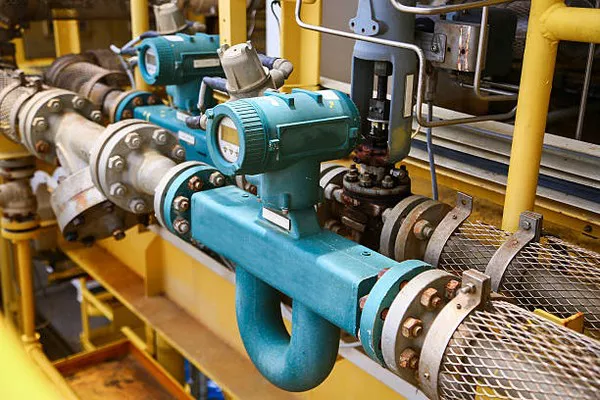Mass spectrometry is a powerful analytical technique used to measure the mass-to-charge ratio (m/z) of ions. It is widely employed in various fields, including chemistry, biochemistry, pharmacology, and environmental science, due to its ability to analyze the composition of complex mixtures with high sensitivity and precision. Understanding how a mass spectrometer works involves exploring its core components and the principles underlying its operation. This article provides an in-depth look at the mechanisms and functionalities of mass spectrometers.
Fundamental Principles of Mass Spectrometry
At its core, mass spectrometry is based on three fundamental processes: ionization, mass analysis, and detection. These processes allow the identification and quantification of molecules in a sample by generating ions and measuring their mass-to-charge ratios.
Ionization: The process of converting neutral molecules into charged ions.
Mass Analysis: The separation of ions based on their mass-to-charge ratio.
Detection: The measurement of ion abundance and conversion of this information into a usable spectrum.
Components of a Mass Spectrometer
A typical mass spectrometer consists of several key components: the ion source, the mass analyzer, the detector, and the data system. Each component plays a crucial role in the overall functionality of the instrument.
1. Ion Source
The ion source is where the sample molecules are ionized. Several ionization techniques are used, each suited for different types of samples and analytical needs:
Electron Ionization (EI): Commonly used for volatile and thermally stable compounds, EI involves bombarding the sample with high-energy electrons, causing it to lose an electron and form positive ions.
Chemical Ionization (CI): Involves the ionization of a reagent gas, which then ionizes the sample molecules. This method produces softer ionization compared to EI, resulting in less fragmentation.
Electrospray Ionization (ESI): Suitable for large biomolecules, ESI applies a high voltage to a liquid sample, creating a fine spray of charged droplets. As the solvent evaporates, charged ions are formed.
Matrix-Assisted Laser Desorption/Ionization (MALDI): Used for large biomolecules and polymers, MALDI involves embedding the sample in a matrix material and irradiating it with a laser, resulting in ion formation.
2. Mass Analyzer
The mass analyzer separates ions based on their mass-to-charge ratio. Various types of mass analyzers exist, each with unique characteristics:
Quadrupole Mass Analyzer: Consists of four parallel rods, between which a combination of DC and RF (radio frequency) voltages is applied. Ions of specific m/z values can pass through to the detector while others are filtered out.
Time-of-Flight (TOF) Analyzer: Measures the time it takes for ions to travel a fixed distance. Ions are accelerated by an electric field, and their flight time is proportional to their mass-to-charge ratio.
Ion Trap Mass Analyzer: Uses electric fields to trap ions in a small space. By sequentially ejecting ions based on their m/z values, a mass spectrum can be generated.
Fourier Transform Ion Cyclotron Resonance (FT-ICR) and Orbitrap: High-resolution mass analyzers that trap ions in a magnetic or electrostatic field, respectively, and measure their oscillation frequencies to determine m/z ratios.
3. Detector
The detector measures the abundance of ions that exit the mass analyzer and converts this information into an electrical signal. Common types of detectors include:
Electron Multipliers: Amplify the signal generated by incoming ions, producing a detectable current.
Faraday Cups: Collect ions and measure the resulting current, providing a direct measurement of ion abundance.
Microchannel Plates: Consist of an array of tiny channels that amplify the ion signal.
4. Data System
The data system processes the electrical signals from the detector and converts them into a mass spectrum, a plot of ion abundance versus m/z ratio. Modern mass spectrometers are equipped with sophisticated software that allows for data analysis, interpretation, and storage.
Steps in Mass Spectrometry
The operation of a mass spectrometer can be broken down into several sequential steps:
Sample Introduction: The sample is introduced into the ion source. This can be done via direct injection, gas chromatography (GC), or liquid chromatography (LC).
Ionization: The sample molecules are ionized to form charged ions.
Ion Acceleration: Ions are accelerated into the mass analyzer by an electric field.
Mass Analysis: Ions are separated based on their mass-to-charge ratios.
Detection: The separated ions are detected, and their abundances are measured.
Data Processing: The detector signals are processed to generate a mass spectrum.
Applications of Mass Spectrometry
Mass spectrometry is a versatile tool with a wide range of applications:
Proteomics: Identification and quantification of proteins in complex biological samples.
Metabolomics: Analysis of small molecules and metabolites in biological systems.
Environmental Analysis: Detection of pollutants and contaminants in air, water, and soil.
Pharmaceuticals: Drug development and quality control by analyzing the composition and purity of compounds.
Forensics: Identification of substances in criminal investigations.
Advanced Techniques and Innovations
Mass spectrometry continues to evolve, with advancements enhancing its capabilities and expanding its applications. Some notable innovations include:
Tandem Mass Spectrometry (MS/MS): Involves multiple rounds of mass analysis, providing detailed structural information about molecules. This technique is essential for identifying unknown compounds and studying complex mixtures.
High-Resolution Mass Spectrometry (HRMS): Offers superior mass accuracy and resolution, allowing for the precise determination of molecular formulas and structural elucidation.
Imaging Mass Spectrometry: Combines mass spectrometry with imaging techniques to map the spatial distribution of molecules in tissue samples, providing insights into disease mechanisms and drug distribution.
Conclusion
Mass spectrometry is an indispensable tool in modern science, offering unparalleled sensitivity, accuracy, and versatility. Its ability to analyze a wide range of compounds, from small molecules to large biomolecules, makes it a cornerstone of analytical chemistry. Understanding the principles and components of mass spectrometry is crucial for harnessing its full potential in research and industry. As technology advances, mass spectrometry will continue to play a pivotal role in scientific discovery and innovation.

